
A sale-price roast dwelling contently in your freezer can provide menu options for a weekend family dinner or having company over. If properly wrapped and stored at a temperature of 0 degrees Fahrenheit or lower, a roast retains its quality for six to 12 months. If you forgot to remove a roast from the freezer in time to thaw, you can cook the meat from the frozen state. Allow for extra cooking time, as a frozen roast takes longer to cook to a safe temperature.
Cooking Frozen Roast
Beef, pork and lamb roasts are safe to cook from the frozen state. Remove a frozen roast from the oven, and cook it in the oven or on the stovetop as you would normally cook a roast. The only difference is that the cooking time for a frozen roast is approximately 50 percent longer. Never cook a frozen roast in a slow cooker because the temperature doesn't rise to 325 F quickly enough to kill bacteria in the center of the meat. And avoid roasting a chicken, turkey or other poultry without thawing first.
Safe Cooking Temperatures
Test the roast with a meat thermometer and don't rely on the appearance of the roast to tell you when the meat is properly cooked. The safe temperature for beef, pork and lamb roast is 145 F, followed by a resting time of at least three minutes. Cooking is completed during the resting time as the temperature of roast rises 5 to 10 degrees. Venison roasts require a slightly higher temperature of 160 F, but no resting time is required.
Frozen vs. Fresh
There's no doubt that a beef roast safely tucked in the freezer means you can produce a hearty dinner with little advance warning. Still, freezing meat comes at a cost, as the formation of ice crystals affects the quality, tenderness and texture of the meat. Freeze only fresh, high-quality roasts, as freezing will not improve poor-quality meat. Do not freeze a roast in store packaging for more than two weeks, because the packaging isn't intended for long-term storage. Wrap the roast in airtight, waterproof packaging. If meat is vacuum-packed, it keeps for one to three months.
Tips
For evenly cooked meat, cook the roast in a snug-fitting pan. A large pan causes the drippings to evaporate and may result in scorched meat, while a small pan that doesn't allow air circulation may not brown the meat properly. A shallow pan is best because a pan with tall sides steams rather than browns the roast. Use a heavy stainless steel, cast-iron or enameled aluminum pan, which heats the meat gradually and evenly. Avoid thin pans, which heat too quickly. Although a three-minute rest time ensures the roast is thoroughly cooked to a safe temperature, a longer rest firms the meat and allows even distribution of the juices throughout the entire roast. Cover the roast loosely with aluminum foil as it rests to prevent moisture loss, then insert your meat thermometer and carve the roast when it drops to about 120 F.
Related Articles
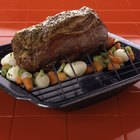
How Long Does a Pot Roast Last After It ...
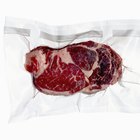
How to Defrost a Frozen Beef Roast in ...
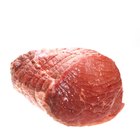
How Long After Buying a Beef Roast Is ...
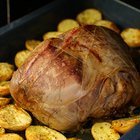
How Long Can You Freeze a Roast?

Is a Roast Bad If It Turns Brown?
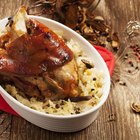
How to Cook Knuckle Roast
Can You Use Stew Meat That Has Been ...
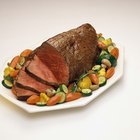
Internal Temp of Rare Roast Beef
How to Slow Cook a Pot Roast With Beef ...

How to Cook Beef Top Round Pot Roast

How Long Can Meat Stay out of the ...

How to Store Leftover Roast Pork
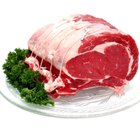
How to Marinate a Top Round Roast

How to Freeze Steaks

How to Make a Blackbuck Antelope Roast
Can I Freeze Pork Immediately After ...

If Meat Is Frozen, How Long Does It ...

Can I Leave a Frozen Pork Roast out ...
How to Cook Brisket Slowly With a ...

How Long Do You Keep Meat in Freezer?
References
- Clemson University Extension: Safe Handling of Beef
- University of Illinois Extension: Cooking Meat
- University of Illinois Extension: Thawing Meat
- University of Illinois Extension: Meat Temperature Chart
- U.S. National Library of Medicine, National Institutes of Health: The Effects of Freezing and Thawing Rates on Tenderness, Sensory Quality and Retail Display of Beef Subprimals
- University of Nebraska-Lincoln Extension: Pass the Taste Test -- Use a Thermometer!
- The Meat Site: Impact of Freezing and Thawing on Meat Quality
- Saveur: How To Make The Juiciest Beef Tenderloin: Give It A Rest
- All About Roasting: A New Approach to a Classic Art; Molly Stevens
Writer Bio
M.H. Dyer began her writing career as a staff writer at a community newspaper and is now a full-time commercial writer. She writes about a variety of topics, with a focus on sustainable, pesticide- and herbicide-free gardening. She is an Oregon State University Master Gardener and Master Naturalist and holds a Master of Fine Arts in creative nonfiction writing.
Photo Credits
Jupiterimages/Comstock/Getty Images